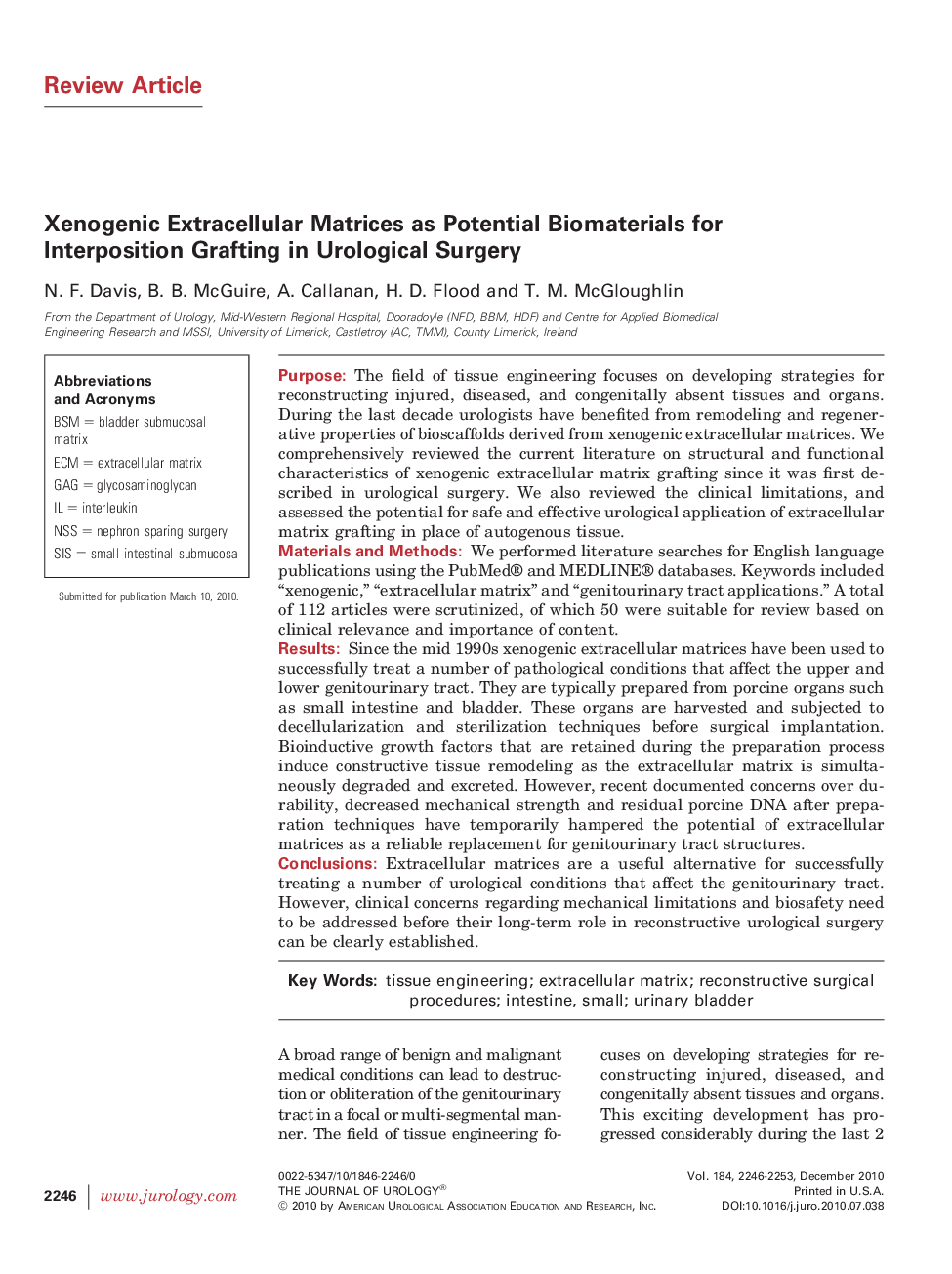| کد مقاله | کد نشریه | سال انتشار | مقاله انگلیسی | نسخه تمام متن |
|---|---|---|---|---|
| 3872921 | 1598956 | 2010 | 8 صفحه PDF | دانلود رایگان |

PurposeThe field of tissue engineering focuses on developing strategies for reconstructing injured, diseased, and congenitally absent tissues and organs. During the last decade urologists have benefited from remodeling and regenerative properties of bioscaffolds derived from xenogenic extracellular matrices. We comprehensively reviewed the current literature on structural and functional characteristics of xenogenic extracellular matrix grafting since it was first described in urological surgery. We also reviewed the clinical limitations, and assessed the potential for safe and effective urological application of extracellular matrix grafting in place of autogenous tissue.Materials and MethodsWe performed literature searches for English language publications using the PubMed® and MEDLINE® databases. Keywords included “xenogenic,” “extracellular matrix” and “genitourinary tract applications.” A total of 112 articles were scrutinized, of which 50 were suitable for review based on clinical relevance and importance of content.ResultsSince the mid 1990s xenogenic extracellular matrices have been used to successfully treat a number of pathological conditions that affect the upper and lower genitourinary tract. They are typically prepared from porcine organs such as small intestine and bladder. These organs are harvested and subjected to decellularization and sterilization techniques before surgical implantation. Bioinductive growth factors that are retained during the preparation process induce constructive tissue remodeling as the extracellular matrix is simultaneously degraded and excreted. However, recent documented concerns over durability, decreased mechanical strength and residual porcine DNA after preparation techniques have temporarily hampered the potential of extracellular matrices as a reliable replacement for genitourinary tract structures.ConclusionsExtracellular matrices are a useful alternative for successfully treating a number of urological conditions that affect the genitourinary tract. However, clinical concerns regarding mechanical limitations and biosafety need to be addressed before their long-term role in reconstructive urological surgery can be clearly established.
Journal: The Journal of Urology - Volume 184, Issue 6, December 2010, Pages 2246–2253